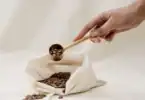Himalayan salt has gained popularity in recent years for its unique pink and red hues, as well as its perceived health benefits. While it is commonly used as a finishing salt, some have wondered if it can also be used in food preservation for pickling, curing meat, brining and fermenting.
Unlike table salt, which often contains additives such as iodine, Himalayan salt is a natural, unrefined salt that contains a variety of minerals, including calcium, potassium, and magnesium. These minerals not only give the salt its distinctive color, but also contribute to its slightly different taste compared to regular table salt. for more about those trace minerals, refer to our article Minerals In Himalayan Salt: Let’s See What’s in There.
But can Himalayan salt be used for preserving and fermenting foods? Some people suggest that the mineral content in Himalayan salt may actually enhance the flavor and nutrient content of fermented foods.
Defining Food Preservation Terms
Sometimes this subject gets a bit confusing because food preservation terms have be used interchangeably. Here is a quick review of what food experts mean when they use the terms we’ll discuss in this article:
Curing
This is a general term that encompasses all the methods of preserving foods by addition of salt. Salt is used in fermentation, pickling, dry curing, brining and marination.
When most people use the term ‘curing’, they tend to be referring to preserving meat. Salt helps extract the moisture from foods – and salt curing of meat goes back to ancient times. Over time, humans came up with ingenious ways to improve the salt preservation process by adding nitrates, smoking the salted meat and other means.
Pickling
The term pickling has two different meanings:
- Pickling with Salt – preserving food via a process of anaerobic fermentation by placing it in brine (salt + water)
- Pickling with Vinegar – preserving food by immersing it in vinegar (not a fermentation process)
So you can have a jar of pickles, but that doesn’t tell you which method was used to preserve them. And while many pickles are made from preserved cucumbers, there are a wide range of foods that can be pickled including many vegetables, fruits, eggs, meats & fish.
Fermenting
Fermentation is a broad term that refers to converting the carbohydrates in food to alcohol or organic acids using microorganisms. Getting those organisms, either bacteria or yeast to do what they do is intentional and the process is controlled to get a desired result. To say it more simply, Fermenting is the process of breaking down complex organic substances into simpler compounds using bacteria or yeast.
For the purpose of this article, we’ll focus on the organic acids (and not get into the alcohol or yeasts). In the case of Pickling with Salt mentioned above, fermentation involves getting Lactic Acid to preserve those cucumbers into perfect pickles.
Brining
Brining is soaking a food in brine, which is just water plus salt. Meats tend to be brined for 24 hours or less. Vegetables tend to be brined for a much longer time (here we are, back at fermented pickles again …)
It also gets confusing because food preservationists use the term ‘dry brining’ – which simply means using the salt without the water. They also use the term ‘dry curing’ for the same process, usually with meat.
One important thing to point out with brining, is that the water to sodium ratio is very important in the process. Different salt has different amounts of sodium by volume – to the extent that it can make the difference between successful tasty pickles vs. mushy & moldy cucumbers that did not get preserved. For more about the differences in the amount of sodium in various salt, including pickling salt, see our article Salt Comparison Guide: Salt Sodium Content.
A Thought on Food Preservation Terms
As you read through sources on food preservation, be aware that many of these terms get used a bit loosely and interchangeably. I’m trying to be consistent within this article and this website, and also have tried to be consistent with the Wikipedia set of articles on food preservation – which are far more technical and detailed, BTW. When you find a great recipe somewhere, just note that their terminology might not match up exactly with ours.

Using Himalayan Salt for Pickling
Himalayan salt is a natural, unrefined salt that is rich in minerals, including potassium, magnesium, and calcium. Like pickling salt, it tends to be free from additives like Iodine or anti-caking agents that are often found in table salt. For a deep dive into the differences between Himalayan salt and Pickling salt, see Pickling Salt vs Himalayan Salt: What’s The Difference?
How to Use Himalayan Salt for Pickling
Finely ground Himalayan salt and traditional Pickling salt (also finely ground) tend to have very similar amounts of sodium by volume. We explore just how much salt to use for pickling, using the Total Sodium Concentration (TSC) method in our article Salt Comparison Guide: Salt Sodium Content. See the section entitled “Salt Comparison Guide for Pickling”.
In general, if your Himalayan salt is very finely ground, you can use as a direct replacement in your pickling recipes. If not, you need to either grind it finely first or measure it by weighing it rather than using a tablespoon or other volume measuring device. Using coarse Himalayan salt may also take longer for the salt to dissolve into your pickling brine.

Using Himalayan Salt for Meat Curing
When using the term ‘curing’ specifically with meat, the processes can get even more confusing. Meat curing may have started as preserving meat with salt, but over history, since meat was such an important commodity to preserve and to be able to transport without aid of refrigeration, that many more methods were invented, including adding nitrites or nitrates to the meat, smoking it, drying and aging it, and even fermentation it. All of these methods tend to get lumped under ‘meat curing’, whether salt is involved or not.
There also is product that is called Curing Salt or Prague Powder, which is salt combined with Sodium Nitrite, which is commonly used to cure meat because the nitrite is very effective at preventing the growth of harmful bacteria. It sometimes gets called “pink salt” because it is often dyed a pink color to distinguish it from table salt. It’s important to point out that this product is different than the “pink salt” mentioned throughout this site: Pink Himalayan salt – which is primarily Sodium Chloride with no nitrites.
Why Use Himalayan Salt for Meat Curing
Himalayan salt is a popular choice for meat curing because it contains trace minerals that can enhance the flavor of the meat. It also has a unique pink color that can give the meat an attractive appearance.
How to Use Himalayan Salt for Meat Curing
Himalayan salt can be used in the same way as other salt for meat curing. If your recipe calls for salt, you can replace the salt with Himalayan salt. If your recipe calls for Curing salt, you could use Himalayan salt, but you would need to get the sodium nitrite from a different source. Himalayan salt is not a substitute for Curing salt, even though both products are pink.
When using Himalayan salt for dry curing meat and the salt is applied to the surface, Himalayan salt can be used as a direct replacement for the salt in your recipe. You may want to grind it to the same grain size as the salt suggested in your recipe to achieve the same surface area coverage.
When substituting Himalayan salt in meat curing recipes that call for brining or other fermentation methods, I would refer you to the Sodium comparison table in Salt Comparison Guide: Salt Sodium Content. Try to match the amount of sodium, not the volume measurement of salt when making the substitution.
Final Thoughts
Himalayan salt can indeed be used for pickling, curing meat, and fermenting. The additional trace minerals and natural pink color may even enhance the finished preserved food product!
Salted meat Photo by Studio Crevettes.







